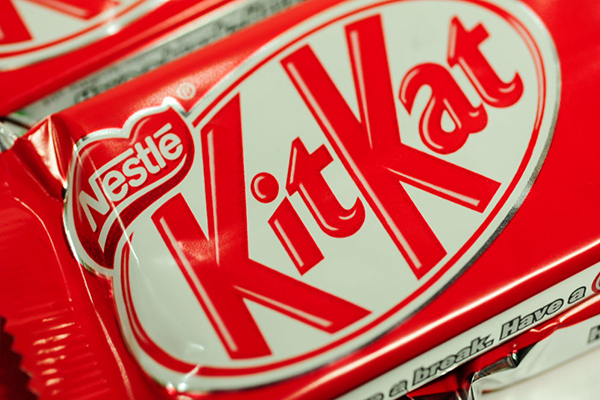Active and passive pairs for different regions
Sam Benstead looks at how investors can pair different types of funds in the UK, Asia, the US and Europe.
28th May 2025 08:34
by Sam Benstead from interactive investor

Passive investing continues to rise in popularity. We see this in our monthly most-bought tables, where passive funds such as Vanguard’s LifeStrategy range or US or global index trackers, dominate the lists.
The Investment Association, the industry trade body, calculates that around 25% of the UK funds industry is now invested passively. A decade ago (at the end of 2015), their overall share of industry funds under management was 12.4%.
Our Super 60 list of investment ideas includes both active and passive funds, giving investors a range of options to add exposure to different investment markets.
- Invest with ii: Open an ISA | ISA Investment Ideas | Transfer a Stocks & Shares ISA
There are advantages and disadvantages with passive and active investing. While passive funds generally own companies according to their size, meaning that the largest companies account for the top positions, managers of active funds try and find undervalued firms, which may be ignored by indices or other fund managers.
Because of this, pairing passive and active funds in a region can be a successful approach as it gives exposure to the largest companies and the market return, but also hidden opportunities.
We look at possible active and passive pairings, using funds from our Super 60 list, a selection of funds favoured by our analyst team.
- Time to be bullish or bearish? Five pros give their take
- Fund managers’ favourite UK smaller companies
The UK
Fidelity Index UK charges just 0.06% to track the FTSE All-Share index, and currently contains the largest 558 companies in the UK. The yield is 3.23%, with AstraZeneca, HSBC and Shell the largest positions.
Performance has been strong, returning 79% over the past decade compared with 60% for the average UK equity fund.
But an even better fund has been Fidelity Special Values, an investment trust run by Alex Wright. The trust is one of our Super 60 ideas. FSV is up 127% over this period due to successful stock picking.
Alex Watts, ii senior investment analyst, says: “Fidelity Special Values trust takes an all-of-market approach to finding out-of-favour UK equities. Managers Alex Wright and Jonathan Winton look for companies that are undervalued by the market, and they are also permitted a small overseas allocation.
“The portfolio typically holds companies trading at lower valuation multiples than the wider market. This valuation and contrarian focus makes for benchmark differentiation, and typically leads the managers to allocate heavily to small/mid-cap, with FTSE small-cap and FTSE 250 making up 67% and 38% of the portfolio respectively.”
While capital appreciation is the predominant goal for FSV, Watts notes that the 3% yield is helpful for smoothing returns over the long term.
- Is this area of UK market one investors should focus on?
- ‘Distressed’ UK value investments that could triple
Europe
Our fund research team like the Vanguard FTSE Developed Europe ex-UK ETF for passive exposure to Europe.
It owns the Continent’s largest shares (excluding UK firms) for a 0.1% annual fee. The largest positions are SAP, Nestle, (who make KitKats, pictured below) and ASML.
European shares are having a good run, with this tracker (ticker VERX) rising 127% over the past 10 years and 77% over five years. In both periods it has beaten the IA Europe ex-UK sector.
However, JPM Europe Dynamic (ex-UK) has done better, returning 145% over 10 years and 100% over five years.
Added to our Super 60 list this year, Dzmitry Lipkski, head of funds research at ii, says: “An established quantitative model forms the core of the stock selection approach and uses various factors to identify stocks with attractive quality, value and/or momentum characteristics. The output from the model is assessed and potentially amended by the team, drawing on the research of the well-resourced International Equity Group and external sources.”
Lipkski notes that the stock selection process can lead to a small and mid-cap bias versus the index at times. The largest positions are currently SAP, Novartis, Allianz and Roche, and Germany is its biggest overweight compared to the benchmark.

The US
Tracker funds have been a brilliant way of owning US shares due to the continued rise of the largest technology businesses, such asApple Inc (NASDAQ:AAPL) and NVIDIA Corp (NASDAQ:NVDA).
Over the past 10 years, the Super 60-rated SPDR S&P 500 Ucits ETF, which charges just 0.03% in yearly fees, has returned 269% compared with 212% for the average North America equities fund.
However, there are worries about valuations and concentration in the US market, with the largest 10 companies in the S&P 500 index now accounting for more than one-third of the market.
- Is US stock market exceptionalism over?
- Watch our video interview:how we're playing short-term US market pain
A fund to hold alongside a tracker could be Neuberger Berman US Multicap Opportunities, which owns both small and large companies.
Watts explains: “For those seeking broader exposure across market caps within US equities, there is the Neuberger Berman US Multi-Cap Opportunities fund. The fund is unconstrained in being able to seek opportunities from large/mega-cap down to small-cap. While still able and willing to selectively invest in mega-cap stocks, the portfolio also houses businesses of varying scale and from a diverse and differentiated set of sectors to capitalise on the breadth of the US market. It’s notable that the fund has a slightly higher revenue exposure to the US (68%) than its S&P 500 benchmark (60%).”
The largest positions include giants such as Alphabet and Microsoft, but also lesser-known names like Graphic Packaging Holding Co (NYSE:GPK) and Brookfield Corp Registered Shs -A- Limited Vtg (NYSE:BN).
Asia
Our Super 60 list contains three passive funds to track Asian markets: HSBC Japan Index (0.14% fee to own Japanese shares); iShares Pacific ex Japan Equity Index (0.13% fee to own companies in the Pacific, including in countries such as Taiwan and Australia, but excluding China and Japan); and HSBC MSCI China ETF (0.28% fee for Chinese equities).
For diversified exposure across key Asian markets, an active fund, such as Fidelity Asia, is one option to hold alongside a passive fund that makes a high-conviction bet on a specific market.
On our Super 60 list, Fidelity Asia has 34.3% in China, 22.1% in India, 13.9% in Taiwan and 11.4% in Korea, with the balance in other Asian markets, such as Indonesia, Malaysia and Thailand. It does not invest in Japan.
Because it doesn’t invest in Japan, when paired with the HSBC Japan Index, an investor can build a diversified exposure to Asian equities.
- The Analyst: a new angle on the active vs passive debate
- Sign up to our free newsletter for investment ideas, latest news and award-winning analysis
Lipski says: “The manager Teera Chanpongsang seeks to identify companies where the market has not fully appreciated the earnings growth potential. He is a long-term investor and likes to invest in well-managed industry leaders that are well positioned to benefit from changes in industry dynamics and that trade on attractive valuations.
“He also aims to identify companies that trade below their intrinsic value and that can benefit from improving fundamentals, growth potential that is not fully understood by the market, turnaround opportunities or a cyclical turning point being reached in certain industries.”
These articles are provided for information purposes only. Occasionally, an opinion about whether to buy or sell a specific investment may be provided by third parties. The content is not intended to be a personal recommendation to buy or sell any financial instrument or product, or to adopt any investment strategy as it is not provided based on an assessment of your investing knowledge and experience, your financial situation or your investment objectives. The value of your investments, and the income derived from them, may go down as well as up. You may not get back all the money that you invest. The investments referred to in this article may not be suitable for all investors, and if in doubt, an investor should seek advice from a qualified investment adviser.
Full performance can be found on the company or index summary page on the interactive investor website. Simply click on the company's or index name highlighted in the article.